Search
Did you mean: Xois?
Search Results
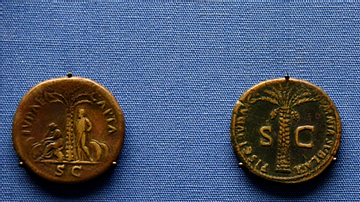
Image
Roman Coins Referring to Judaea, Minted at Rome
Emperor Vespasian (r. 69-79 CE) issued a large series of coins commemorating the defeat of the First Jewish Revolt (66-70 CE), and Nerva (r. 96-98 CE) made coins to mark the end of abuses in the collection of the tax which Jewish were obliged...
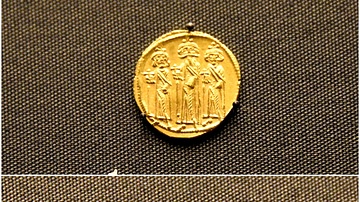
Image
Byzantine coins of Heraclius
Byzantine coins often show Christian symbols and an image of the Emperor. Here, Emperor Heraclius and his sons wear crowns and crosses. A cross also appear on the back. Gold solidus coins, minted in Constantinople, issued by the Byzantine...
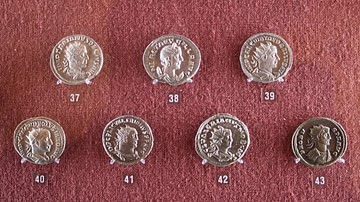
Image
Roman Empire Silver Coins
Silver coins from the Roman Empire (1st - 3rd century CE) depicting various emperors. 37 Trajan. 38 Etrusclia. 39 Trebonianus Gallus. 40 Volusian. 41. Valerian I. 42. Valerian II. 43 Probus. (Numisamtics Museum, Athens)
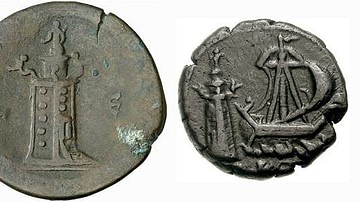
Image
Alexandrian Coins Depicting the Lighthouse of Alexandria
Two coins depicting the Lighthouse of Alexandria, one of the Seven Wonders of the World. Alexandrian mint, 2nd century CE.
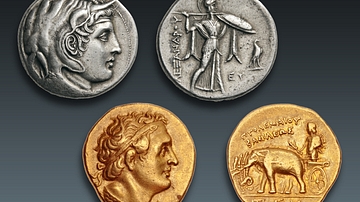
Image
Elephant Symbolism on the Coins of Ptolemy I
Two coins issued by Ptolemy I: 1) A portrait of the deified Alexander the Great wearing an elephant scalp on his head, with a ram’s horn over his temple, and an aegis (sacred fleece) over his shoulder; on the reverse Athena Alcidemus, the...
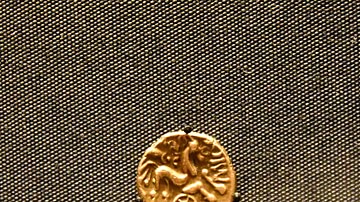
Image
Britain's First Inscribed Coins
This coin, naming the ruler Commius, is probably the earliest evidence of writing in Britain. His name appears in its Celtic form, "COMMIOS". Later coins, such as those of his son Tincomarus, have inscriptions written in Latin. Gold coin...
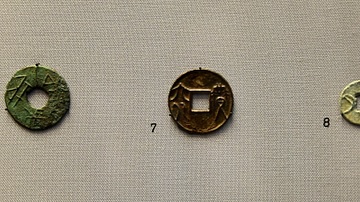
Image
Round Coins from Ancient China
During the Warring States period, some States issued round coins with a round or squared hole in the middle. The inscription usually indicates the weight or value. 6. Coin with weight in jin, Wei State. 7. Coin with value in huo, Qi State...
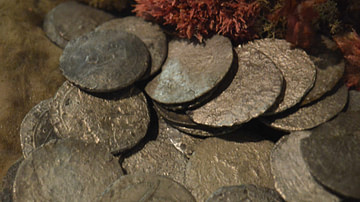
Image
Silver Coins from the Batavia
Rijksdaalder silver coins from the Batavia (1629) shipwreck.
Geraldton Museum, Western Australia.
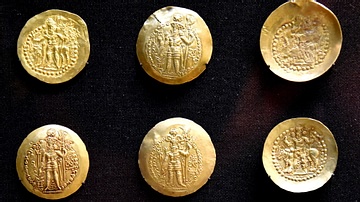
Image
Gold Coins
Gold coins of the Sassanian, Kushanshah, and Kidarite Dynasties. 309-380 CE. From the Burnes, Cunningham, Hay, Parkes Weber, and Prinsep Collections. The British Museum, London.
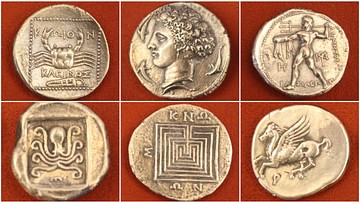
Image
Greek Coins
Top row (L to R): Cos (300-190 BCE) Silver tetradrachm, crab. Syracuse (c. 400 BCE) - Silver decadrachm, head of Arethousa with dolphins. Macedon (306-283 BCE) - Silver tetradrachm, Poseidon with trident. Bottom row (L to R): Euboea...